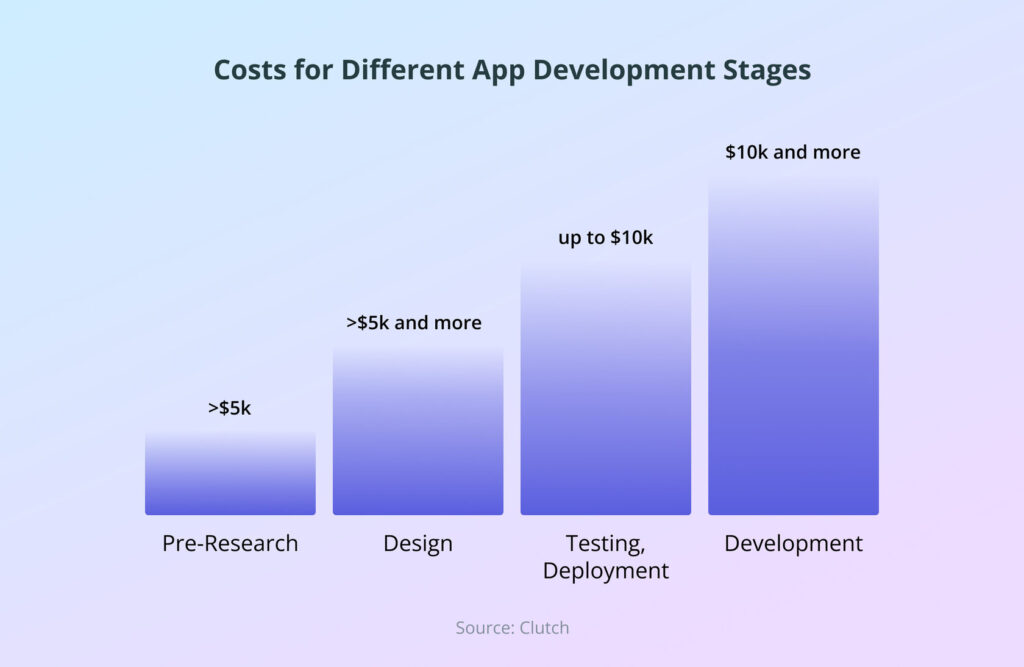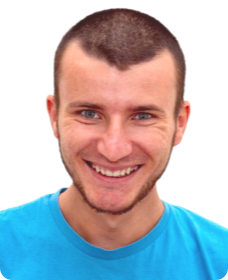On the ever-evolving digital scene, mobile applications have become a fundamental tool for businesses to engage with customers and bolster growth. However, when it comes to app development companies’ costs, they remain a critical concern.
Building a successful app involves careful consideration of various factors that influence its development cost. According to the 2023 stats from Business of Apps, the average cost of developing a mobile app ranges from $30,000 to about $80,000, depending on complexity and functionality.
Some vital factors determining app development companies’ costs are:
- Complexity. The more complex the app’s features and functionality, the higher the development cost.
- Platform. Developing for multiple platforms increases the cost.
- Design. Customized and intricate designs or app redesigns require more time and resources, impacting the cost.
- Integration. Integrating with third-party APIs or backend systems can add to the development cost.
- Maintenance. Ongoing updates, bug fixes, and support contribute to the overall cost.
Testing and Quality Assurance. Rigorous testing processes increase development costs.
This article delves deeper into the topic of how much it costs to develop an app, offering valuable insights to help you tone down the costs and build your app smart.
Table of Contents
The Cost of App Development by Stages
Having a rough estimate of the costs associated with various stages of app development enables companies to effectively allocate the venture capital they have raised throughout the entire mobile app development cycle.

By understanding the financial implications of each stage, app developers can make informed decisions on resource allocation, budgeting, and strategic planning. This ensures that the available funds are optimally utilized, allowing for a smoother and more efficient app development process.
Six years ago, Clutch, a B2B analytics company, conducted research that gathered data from over 100 app development companies. The study focused on app development stages, and provided insights into company expenditures allocated to each stage. By analyzing the data from these diverse app development companies, Clutch shed light on the financial distribution across different stages of the development process. Let’s take a look at the details below:
- Discovery Stage Most companies within the research do not go above the $5,000 threshold in terms of expenditure.
- Design and Development Stage Design-wise, the majority of businesses spendings ranges from $5 to $50k.
- Testing & Deployment Stage This phase is a must when it comes to conceiving any app development project. According to the Clutch research, most businesses rarely go above the $5-$10k range at this particular stage.
Also, don’t forget that app stores take platform fees, and you should be ready to pay some part of your income for the app placement in the store.

This valuable information allows app businesses to gain a better understanding of the investment patterns and make informed decisions regarding budget allocation for app development and market your app before launch.
ASO: Post-Production Stage
App Store Optimization (ASO) is a critical and often overlooked stage in app development planning. While investing in app design is essential, neglecting ASO can be detrimental to the success of your product.
Without proper app optimization, even the most designed and innovative app runs the risk of getting lost in the fierce competition within app stores. Consequently, it may stand in the way of your app monetization efforts.
Here are some key points to consider:
- Use budget-friendly Asolytics tools to control the app optimization process without the need for expensive consultations.
- Asolytics offers a comprehensive suite of tools and analytics to monitor and improve your app’s performance in app stores.
- With Asolytics, you can conduct keyword research, analyze competitors, and gain valuable insights for effective app optimization.
5 Useful Tips for Lowering App Development Companies Costs
Here are 5 tips for lowering the cost of app development while ensuring optimal results:
- Plan like a pro Clearly define your app’s goals, features, and target audience to avoid unnecessary additions or modifications during or after development.
- Invest in ASO Implement effective app store optimization strategies to improve visibility, attract users, and increase organic downloads.
- Outsource wisely Consider outsourcing specific development tasks or hiring remote developers from regions with competitive rates, ensuring cost-effective utilization of resources.
- Test rigorously and early Conduct comprehensive testing throughout the development process to identify and rectify issues early on, minimizing the cost of fixing bugs and glitches later.
- Update nonstop Regularly maintain and update your app to address user feedback, fix bugs, and introduce new features, ensuring its relevance and longevity while reducing the likelihood of costly issues in the future.
By incorporating these tips, you can effectively manage costs and save money while developing a high-quality product that meets the needs of your target audience.
Bottom Line: Spend Wisely
Cutting to the chase, when it comes to app development companies’ costs, building smart and saving money go hand in hand. By understanding the factors that influence your spendings and implementing cost-effective strategies, businesses can optimize their budget allocation and maximize the return on their investment. One crucial aspect that should not be overlooked is investing in ASO. Here are key takeaways:
- ASO boosts visibility. Implementing ASO techniques such as keyword optimization, compelling descriptions, and eye-catching visuals can significantly improve your app’s visibility in app stores.
- Organic user acquisition. By focusing on ASO, you can attract users organically, reducing the need for expensive marketing campaigns and user acquisition costs.
- Higher app store rankings. Through effective ASO, you can improve your app’s rankings in search results, increasing its chances of being discovered by potential users.
- Long-term cost savings. By optimizing your app’s visibility and attracting organic users, you can achieve sustainable growth and reduce the need for costly marketing efforts. As a result, you get to save money on other vital activities like polishing your app design, perfecting its functionality in response to your users’ needs and comments, releasing quality updates, and the like.
By incorporating ASO into your app development strategy, you can effectively manage costs while maximizing the potential for success. Now that you’ve explored the overall app development companies’ costs and are well aware of the complete overview of app development stages and stats-based investment patterns, you are now ready to effectively manage your expenses and spend wisely.




